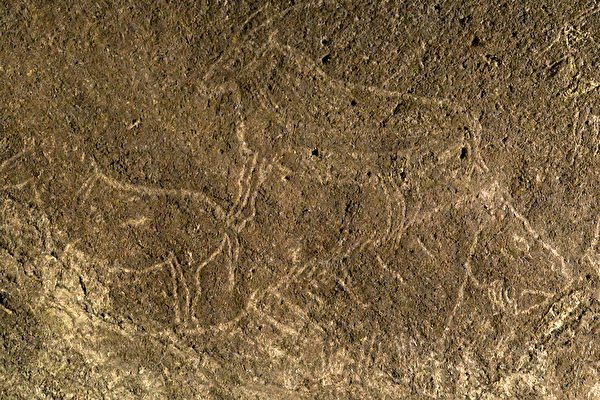Archaeologists in Marbella, Spain have unearthed a rock carving believed to be around 200,000 years old. Currently, researchers are studying the age and origin of this stone.
According to reports from The Independent and Fox News, researchers discovered a simple “X” shaped design on a stone during an archaeological excavation at the Coto Correa site in the Las Chapas area of Marbella, southern Spain. The site contains some of the oldest artifacts in the city.
The excavation was led by the Department of Culture, Education, and Historical Heritage of Marbella. A press release stated that this discovery holds dual significance: firstly, it confirms the presence of humans in Marbella during the early Middle Paleolithic era, a period with little documented history in Spain and unprecedented in the province of Malaga.
“Secondly, the stone with the man-made graphic design may predate known cave art by over a hundred thousand years, making it one of the earliest examples of human symbolic expression,” the press release continued.
Researchers suggest that the sketch on the stone may also be the oldest known carving by humans.
Up to now, the earliest known stone tools date back to between 1.5 to 0.1 million years ago, confirming the existence of prehistoric humans in the Marbella region during the period when modern humans began migrating out of Africa.
In order to confirm the age of this discovery, the Spanish Ministry of Culture has initiated a detailed study of the sketched stone. Analysis will include advanced absolute dating techniques, such as quartz studies on various sediment samples, allowing researchers to accurately determine the archaeological background age. Additionally, the stone will undergo 3D digital recording to generate high-resolution virtual images, facilitating detailed examination of the surface to distinguish tool marks from the graphic.
If the preliminary dating is confirmed, this discovery will establish Marbella as a key site for research on the Middle Paleolithic era, opening new avenues for the study of prehistoric human cognition and symbolic capabilities in the region.
The Coto Correa site is of great interest to the scientific community, containing remains of the earliest populations in the area. Previous archaeological activities in and around the site have unearthed some of Europe’s oldest stone tools dating back to the early Middle Paleolithic era. Subsequent excavations in the area have revealed more early human tools, aiding in determining the site’s age. The site has long been under archaeological protection.

